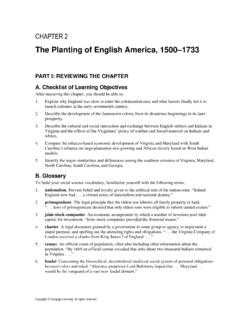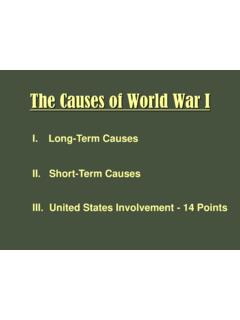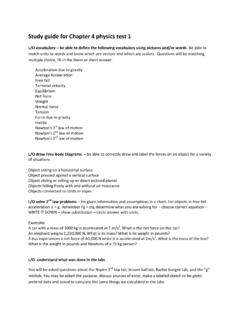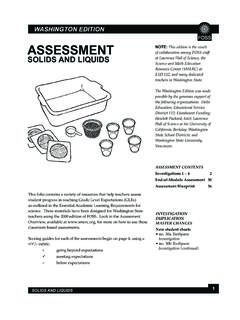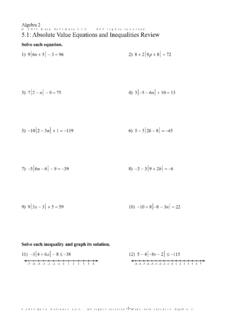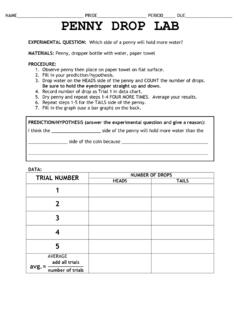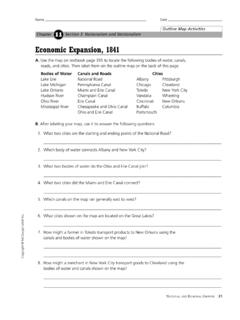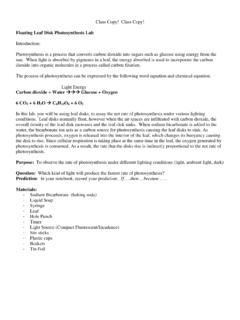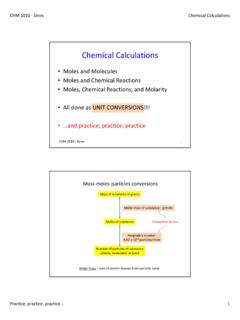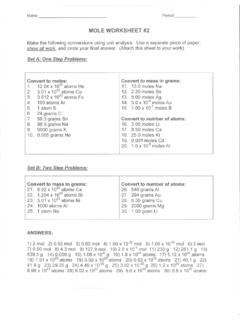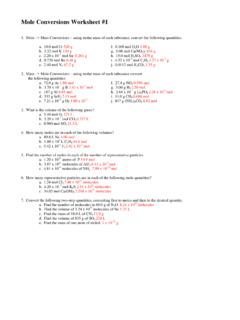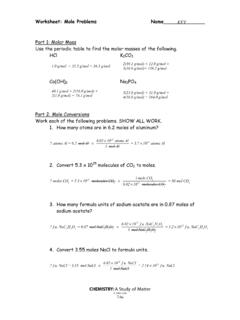Transcription of Honors Chemistry Worksheet 3 Stoichiometry Practice …
1 Honors Chemistry Worksheet 3. Stoichiometry Practice Problems Name _____ Period _____ Date _____. Instructions: Balance the following chemical equations and then determine the missing information for each of the conditions given. The four questions related to each equation are independent of one another. Answers for a particular numbered problem should be in the same units as the information given ( grams to grams, moles to moles, particles to particles). Al2O3(s) Al(s) + O2(g) Work Area 1. 5mol _____ _____. 2. _____ _____. 3. 25g _____ _____. 4. _____ _____ 24. molecules CuO(s) + H2SO4(aq) CuSO4(aq) + H2O(l). 1. _____ .75mol _____ _____. 2. 50g _____ _____ _____. 3. _____ _____ _____. 4. _____ _____ _____ 23. molecules K(s) + N2(g) K3N(s) Work Area 1. 23. atoms _____ _____.
2 2. _____ _____. 3. _____ _____ 25 grams Solve the following: Equation Balancing and 1. Blood hemoglobin contains iron. Assuming that Stoichiometry there are two atoms of iron per molecule of hemoglobin, calculate the approximate molecular weight of hemoglobin. Balance the following reactions: 1. CuO + H2 Cu + H2O. 2. Calculate the formula of a compound, given that 2. Sb + H2O Sb2O3 + H2. of iron combines with of sulfur. 3. Ac(OH)3 Ac2O3 + H2O. 4. Zn + CrCl3 CrCl2 + ZnCl2. 5. BaCO3 + C + H2O CO + Ba(OH)2 3. Aluminum metal reacts with chlorine gas to form solid aluminum trichloride, AlCl3. What mass of chlorine gas is needed to react completely with 163g of aluminum? Write and balance the following reactions: 1. Copper(II)carbonate decomposes to copper(II)oxide and carbon dioxide gas.
3 4. How many grams of oxygen gas can be produced from the decomposition of of aluminum oxide to aluminum and oxygen? If grams are produced, what is the percent yield of the reaction? 2. Sodium reacts with water to produce sodium hydroxide and hydrogen gas. 3. Calcium carbonate reacts with hydrochloric acid to 5. Tetraphosphorus hexaoxide ( ) is formed by produce calcium chloride, water and carbon dioxide. the reaction of phosphorus ( ) with oxygen gas ( ). P4(s) + 3O2(g) P4O6(s). 4. Detonation of TNT (C7H5N3O6) to form nitrogen gas, If a mixture of of phosphorus and of oxygen water, carbon monoxide and carbon. produce of P4O6, what is the percent yield for the reaction? 5. Mixing solutions of calcium nitrate and sodium phosphate forms sodium nitrate and solid calcium phosphate.
4 6. How many moles of lithium oxide will remain unreacted if an available of lithium oxide ( ) produces of LiOH in the reaction Li2O(s) + H2O(l) 2 LiOH(aq)?
